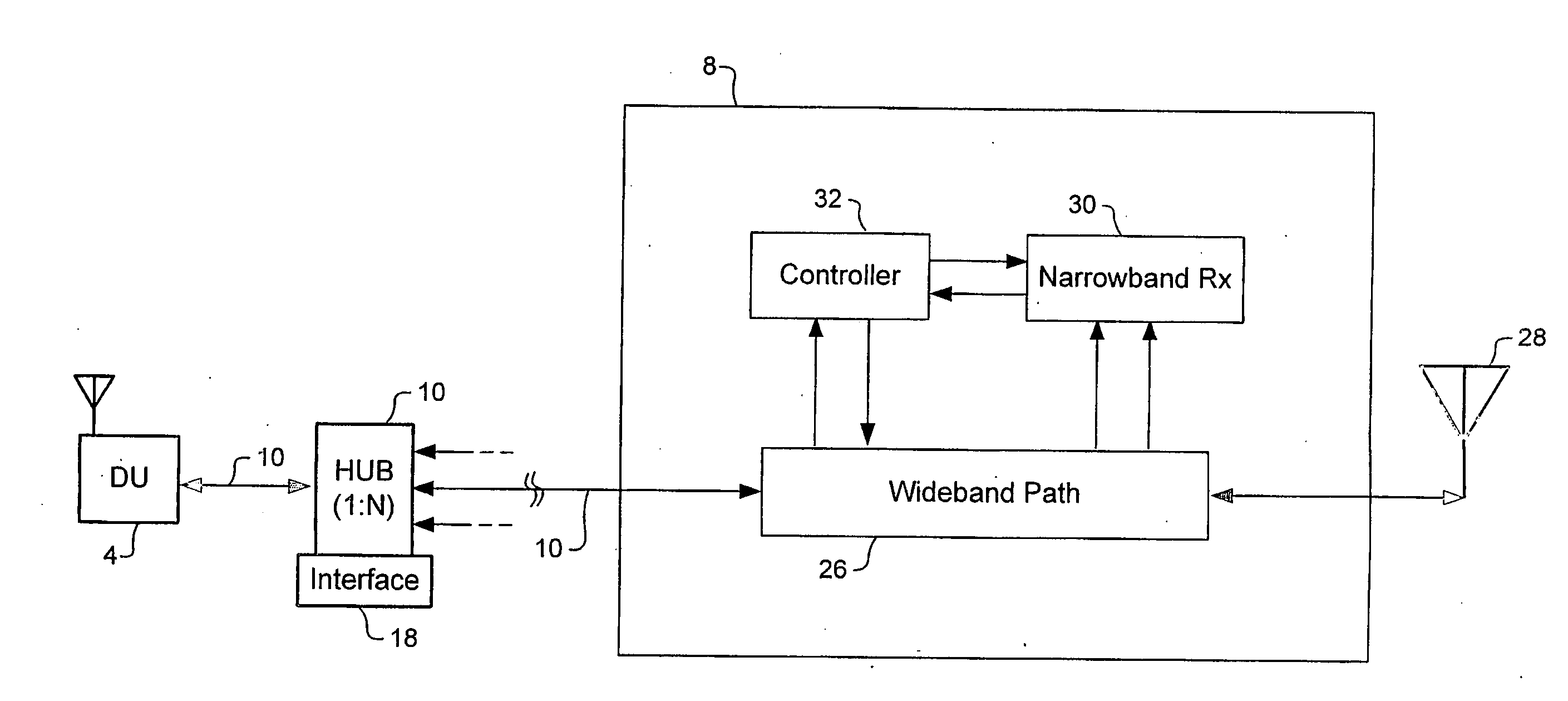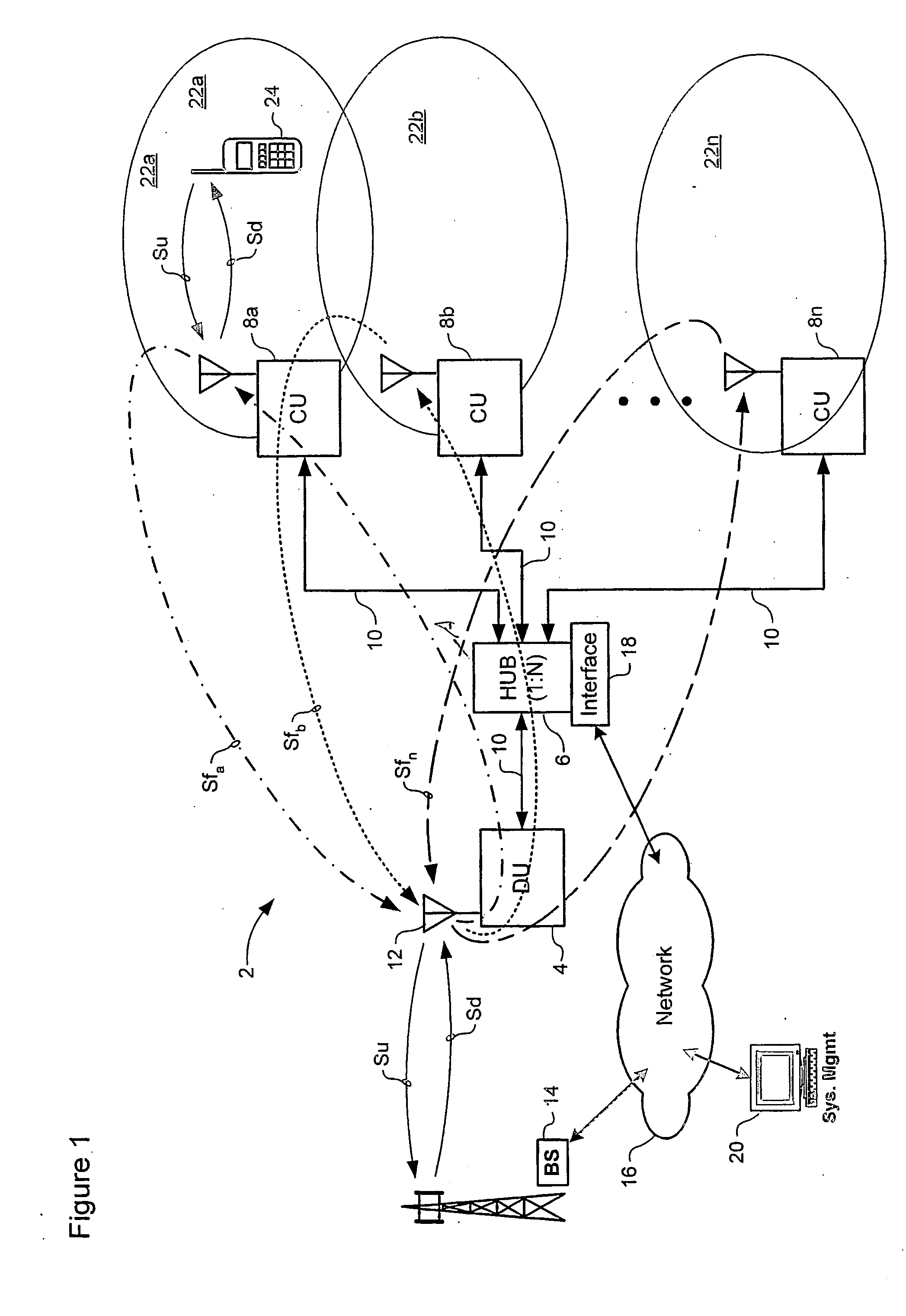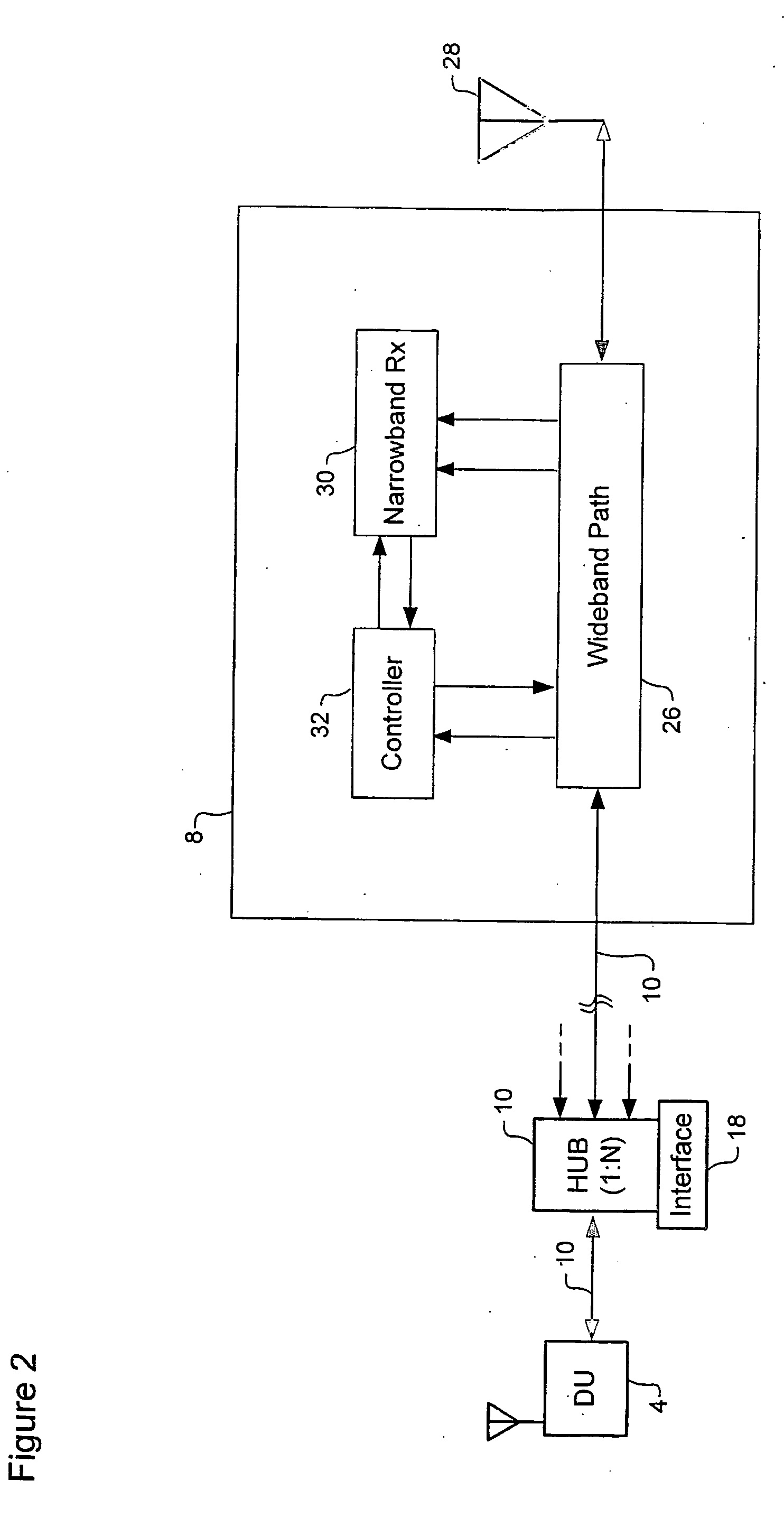Distributed adaptive repeater system
- Summary
- Abstract
- Description
- Claims
- Application Information
AI Technical Summary
Benefits of technology
Problems solved by technology
Method used
Image
Examples
Embodiment Construction
[0025] The present invention provides a cost effective system for providing reliable wireless services within a severe RF environment, such as, for example, within the interior of a building. FIG. 1 is a is a block diagram schematically illustrating principle elements of an on frequency repeater in accordance with the present invention.
[0026] As shown in FIG. 1, the repeater 2 generally comprises a donor unit (DU) 4, an intelligent hub 6, and two or more coverage units (CUs) 8. Conventional transmission lines 10, such as RG-58 or RG-6 co-axial cable, are used to convey signals between the donor unit 4, the hub 6, and each of the coverage units 8.
[0027] The donor unit comprises a donor antenna 12 integrated with a bidirectional amplifier (not shown), which provides sufficient gain to overcome losses in the cable 10 and the intelligent hub 6. This arrangement enables the use of low cost co-axial cable, thereby reducing the overall system cost, and simplifying installation. In genera...
PUM
 Login to View More
Login to View More Abstract
Description
Claims
Application Information
 Login to View More
Login to View More - R&D
- Intellectual Property
- Life Sciences
- Materials
- Tech Scout
- Unparalleled Data Quality
- Higher Quality Content
- 60% Fewer Hallucinations
Browse by: Latest US Patents, China's latest patents, Technical Efficacy Thesaurus, Application Domain, Technology Topic, Popular Technical Reports.
© 2025 PatSnap. All rights reserved.Legal|Privacy policy|Modern Slavery Act Transparency Statement|Sitemap|About US| Contact US: help@patsnap.com



